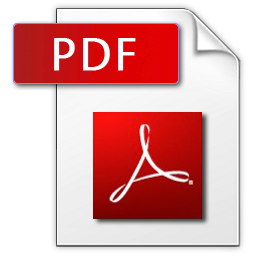2017, volume 21, №4

Title of Issue

Editors Remark

Content

Mathematical and Computer Modelling
A new hybrid blind image watermarking technique for content authentication based on LWT & SVD

Pratibha Singh, R R Tewari
COMPUTER MODELLING & NEW TECHNOLOGIES 2017 21(4) 7-15
Department of Electronics and Communication, University of Allahabad, Allahabad, India
A new ranking based fuzzy approach for fuzzy transportation problem

Rashmi Singh, Vipin Saxena
COMPUTER MODELLING & NEW TECHNOLOGIES 2017 21(4) 16-21
Research Scholar, Babasaheb Bhimrao Ambedkar University, Lucknow (India)
In the current scenario of the competitive market, the adversity on the organization finds the better method to create and deliver values and services to the customers as per customer’s requirement with in optimal cost and time. The transportation model provides a robust framework to meet these challenges. For solving real life problems, there are several methods to solve transportation problem in fuzzy circumstances. In this paper, a method is suggested to solve fuzzy transportation problem in which trapezoidal fuzzy numbers represent transportation cost, availability, and demand for the product. To illustrate the proposed method, a numerical example is solved and obtained results are associated with the results of existing methods. It is observed that proposed method gives the optimal result in comparison to previously existing method and it is very easy to explain and implement in real life transportation problem for the decision maker.
CCRTRD-A concurrency control technique in real time replicated databases

Anil Kumar Gupta1, Vishnu Swaroop2
COMPUTER MODELLING & NEW TECHNOLOGIES 2017 21(4) 22-27
1Computer Sc. and Eng. Department, Bhagwant University, Ajmer, India
2Computer Sc. & Eng. Department, M. M. M. University of Technology, Gorakhpur, India
Data Replication is the process of using multiple copies of data located at multiple servers to help database systems to meet the stringent temporal constraints of time-critical applications, especially Internet-based services to resource for superior availability Each copy of the data is called a replica. These aspects encourage the researchers to study the requirement for realizing the benefits of replication. Current applications such as Web-based services, electronic commerce, mobile telecommunication system use the concept of replication for their functioning. The main goal of replication [5] is to improve availability and consistency. This helps mission critical services, such as many financial systems or reservation systems, where even a short outage can be very disruptive and expensive. Therefore, the major issue is to develop efficient replica concurrency control protocols that can tolerate the overload of the distributed system. Here, a new Concurrency Control protocol (CCRTRD) has been proposed for High Priority point and firm real-time database system using Static Two-Phase Locking (S2PL) for being deadlock free. It also includes High Priority given to a cohort after receiving PREPARE message from its coordinator. Proposed protocol shows significant performance improvement over O2PL and MIRROR in decreasing execution time of the current transaction and waiting time of transactions in queue.
Nanotechnology application challenges: nanomanagement, nanorisks, nanoeducation and consumer behaviour. Review paper

T Lobanova-Shunina1, Yu Shunin2
COMPUTER MODELLING & NEW TECHNOLOGIES 2017 21(4) 28-56
1Faculty of Mechanical Engineering, Transport and Aeronautics, Riga Technical University, 1 Lomonosov Str., Bld V, LV-1019, Riga, Latvia
2Institute of Solid State Physics of the University of Latvia, 8 Kengaraga Str., Riga, LV-1063, Latvia
